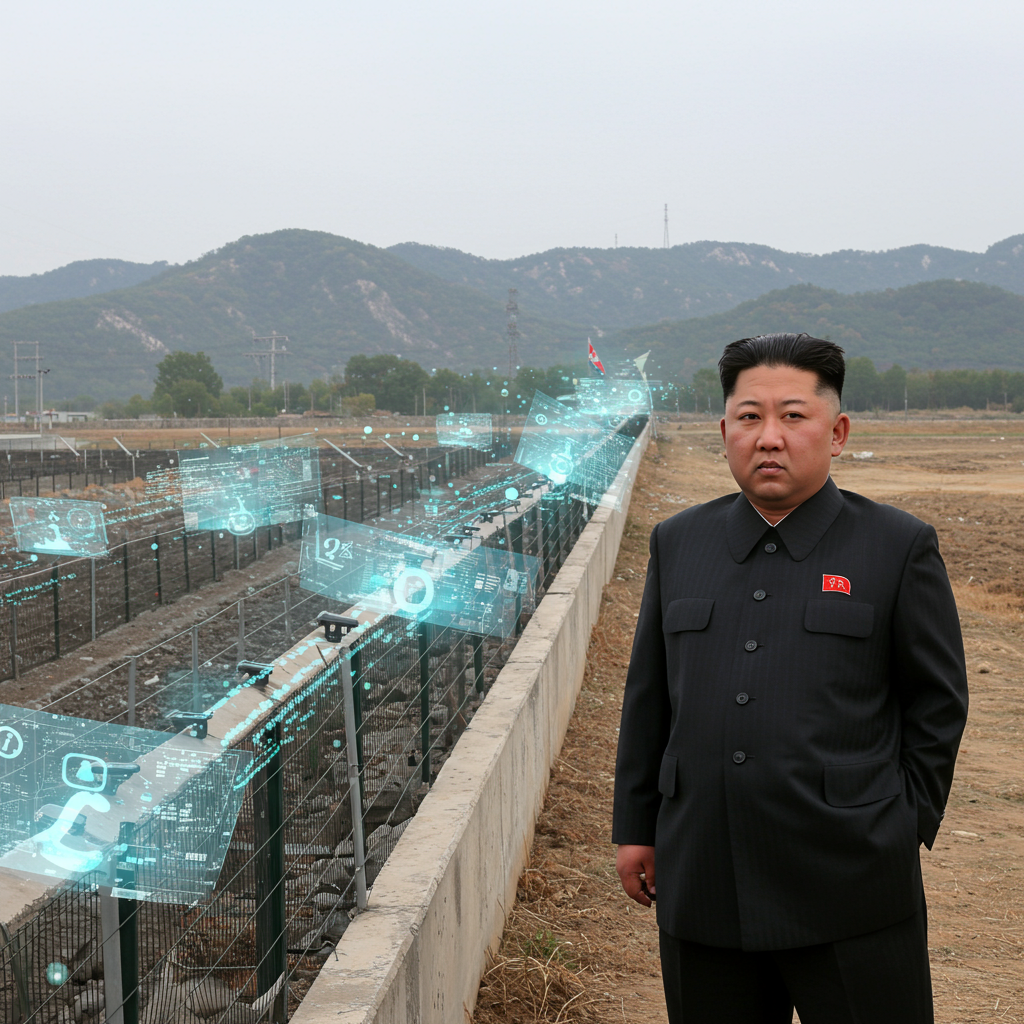Amidst intensifying military operations in Gaza, israeli forces have directed residents in the northern areas to evacuate, a move coinciding with renewed international calls for a ceasefire, notably from former US President Donald Trump. This complex situation highlights the intertwined challenges of military objectives, urgent humanitarian concerns, and ongoing diplomatic efforts to halt the devastating 20-month conflict. As residents once again face displacement, global pressure mounts for a resolution to secure peace and the release of hostages.
The directive impacts multiple neighborhoods within Gaza City and the Jabalia refugee camp. Residents in these areas have been explicitly instructed to relocate south towards the coastal zone of al-Mawasi. This order precedes an anticipated expansion of Israeli military operations, specifically noted to “intensify and expand westward” within northern Gaza.
Military Actions Escalate in Northern Gaza
Israeli military action in northern Gaza is currently focused on dismantling terrorist infrastructure and eliminating militants, according to statements from the israel Defense Forces (IDF) spokesman. Recent reports indicate a significant uptick in military bombardments across Gaza in the early hours of Sunday, resulting in widespread destruction of residential buildings.
The human cost of this intensified activity is starkly apparent. The hamas-run health ministry reported a devastating toll, with at least 86 people killed in Israeli attacks during the 24 hours leading up to midday on Sunday. Tragically, this figure included three children. Separately, Gaza’s Hamas-run civil defense agency stated that a minimum of 23 individuals lost their lives on Sunday alone.
Al-Mawasi Strike Highlights Displacement Risks
Disturbingly, violence has extended even to areas designated for evacuation and perceived safety. In al-Mawasi, near the southern city of Khan Younis – a location where residents from the north were advised to seek refuge – a reported Israeli air strike hit a tent housing displaced people. This single incident tragically resulted in five fatalities, including three young children from the Maarouf family.
The family’s parents recounted the horror. The mother, Iman Abu Maarouf, described being bombed while they were asleep on the ground. She emphasized their innocence, stating, “We didn’t do anything wrong. My children were killed, and the rest are in intensive care.” Their father, Zeyad Abu Maarouf, confirmed they had followed instructions, arriving in the “safe zone” a month prior after being told by Israeli authorities to move to al-Mawasi. When questioned about this specific event, the IDF stated it could not provide immediate details without more information but asserted it adheres to international law and implements measures to reduce harm to civilians. Amidst these operations, an IDF soldier, Sergeant Yisrael Natan Rosenfeld, 20, was killed in northern Gaza on Sunday.
Diplomatic Push for Ceasefire Intensifies
The escalation of military activity coincides with renewed diplomatic efforts aimed at achieving a ceasefire in Gaza and securing the release of remaining hostages held by Hamas. Former US President Donald Trump has emerged as a prominent voice pushing for a resolution.
Trump has forcefully reiterated his call to “make the deal in Gaza” and facilitate the return of the remaining captives. On Saturday, he publicly stated his belief that Israeli Prime Minister Benjamin Netanyahu was actively negotiating a deal with Hamas “right now,” expressing optimism that an agreement could potentially be reached within the coming week.
Stalled Negotiations and Sticking Points
Despite intensified efforts by international mediators, a senior Hamas official has indicated that negotiations with Israel remain stalled. Qatari mediators reportedly hope that significant pressure from the United States could help overcome the current impasse. Prime Minister Netanyahu has linked resolving the Gaza situation and defeating Hamas to broader regional opportunities, particularly following a recent de-escalation between Israel and Iran, stating confidence in achieving both objectives and rescuing the hostages.
Previous attempts at securing a lasting truce have faltered. A ceasefire deal initiated on January 19 failed to progress beyond its initial stage, which was meant to pave the way for a permanent cessation of hostilities, a complete withdrawal of Israeli forces, and an exchange of remaining living hostages for Palestinian prisoners held in Israel. A two-month ceasefire earlier in the year also collapsed in March, with Israel citing the need to pressure Hamas for hostage release as the reason for resuming strikes.
The core disagreement preventing a new agreement remains the scope of any ceasefire. Hamas insists on a permanent end to the war and a full withdrawal of Israeli troops in exchange for releasing all hostages. Israel rejects this demand, proposing instead that the war could conclude only if Hamas disarms, surrenders, and goes into exile – terms Hamas refuses. Adding another layer of complexity, a Hamas official recently accused Netanyahu of seeking only a temporary deal to free a limited number of hostages, a claim an Israeli spokesperson countered by stating Hamas was the sole obstacle to ending the conflict, without directly addressing the specific number mentioned.
Humanitarian Aid Challenges
The humanitarian situation in Gaza remains critically dire, exacerbated by disruptions to aid delivery. Israel imposed a comprehensive blockade on humanitarian aid in early March. While this was partially eased after 11 weeks following significant pressure from US allies and dire warnings from global experts about impending widespread starvation, significant challenges persist.
Part of the eased restrictions included the establishment of the Gaza Humanitarian Foundation (GHF), a group backed by the US and Israel. This initiative followed Israeli accusations that Hamas was diverting aid, a charge Hamas denies. However, the GHF’s aid distribution mechanism has faced condemnation from UN agencies. Juliette Touma, communications director for UNRWA (the UN agency for Palestinian refugees), described the new system as “a killing field,” arguing that only the UN and other established humanitarian organizations can ensure orderly distribution. There have been multiple documented incidents of Palestinians being killed or injured while attempting to access aid near distribution sites. While the GHF boss acknowledged deaths had occurred near aid locations, he disputed the claim that 100% of these casualties were directly attributable to close proximity to GHF operations.
Political Undertones and Domestic Issues
Adding another layer to the complex situation, former President Trump has publicly weighed in on Israeli domestic politics, specifically the ongoing corruption trial faced by Prime Minister Netanyahu. Trump has controversially labeled the proceedings a “political witch hunt,” suggesting it hinders Netanyahu’s ability to focus on crucial ceasefire negotiations.
Netanyahu faces charges dating back to 2019, including bribery, fraud, and breach of trust, all of which he denies. His court testimony was recently delayed for a week at his request, citing diplomatic and security issues. Trump’s intervention has drawn criticism within Israel; opposition leader Yair Lapid stated that Trump should not “intervene in a legal process of an independent state.” Despite this, signs of diplomatic movement persist, with a senior Netanyahu advisor scheduled to visit Washington for talks, and plans reportedly being discussed for Netanyahu himself to travel there in the coming weeks.
The conflict’s origins trace back to the Hamas-led attack on southern Israel on October 7, 2023, which resulted in the deaths of approximately 1,200 people and the taking of 251 hostages. The subsequent Israeli military campaign has, according to the Hamas-run health ministry, killed 56,500 people in Gaza, with the ministry reporting that over half of the casualties are women and children, although their figures do not distinguish between combatants and civilians. The war has caused massive displacement, often multiple times, for most of Gaza’s population and led to extensive destruction of infrastructure, leaving residents heavily reliant on external aid. The humanitarian situation remains desperate, with the healthcare system severely damaged and thousands of children requiring urgent medical evacuation.
Frequently Asked Questions
What is currently happening with evacuations in northern Gaza?
Israeli forces have ordered Palestinians in neighborhoods within Gaza City and the Jabaliya refugee camp to evacuate southward towards the al-Mawasi coastal area. This directive precedes anticipated intensified and westward-expanding military operations in northern Gaza, with the stated aim of eliminating militants and their infrastructure. This marks another wave of displacement for residents caught in the conflict zones.
Why is Donald Trump involved in discussions about a Gaza ceasefire?
Donald Trump, as a prominent international political figure, is leveraging his influence to push for a ceasefire agreement between Israel and Hamas and the release of hostages. His involvement reflects the broader international pressure and mediation efforts underway, particularly those potentially involving the United States, to find a resolution to the prolonged conflict and humanitarian crisis in Gaza.
What are the main obstacles preventing a Gaza ceasefire deal right now?
Key obstacles include fundamental disagreements over the terms of a potential deal. Hamas demands a permanent end to the war and the full withdrawal of Israeli forces in exchange for freeing all remaining hostages. Israel rejects this, offering conditions like Hamas’s surrender or proposing potentially limited, temporary agreements. The differing objectives regarding the duration and scope of a truce, coupled with the fate of hostages and prisoners, continue to stall negotiations despite intensified mediation efforts.
In conclusion, the situation in Gaza remains volatile, marked by escalating military actions, forced displacement, and a severe humanitarian crisis. While diplomatic efforts, including high-profile pushes from figures like Donald Trump, continue behind the scenes, the path to a lasting ceasefire appears fraught with significant political and strategic hurdles. The human toll of the conflict underscores the urgent need for a breakthrough in negotiations, offering hope for an end to the suffering for the civilian population.


